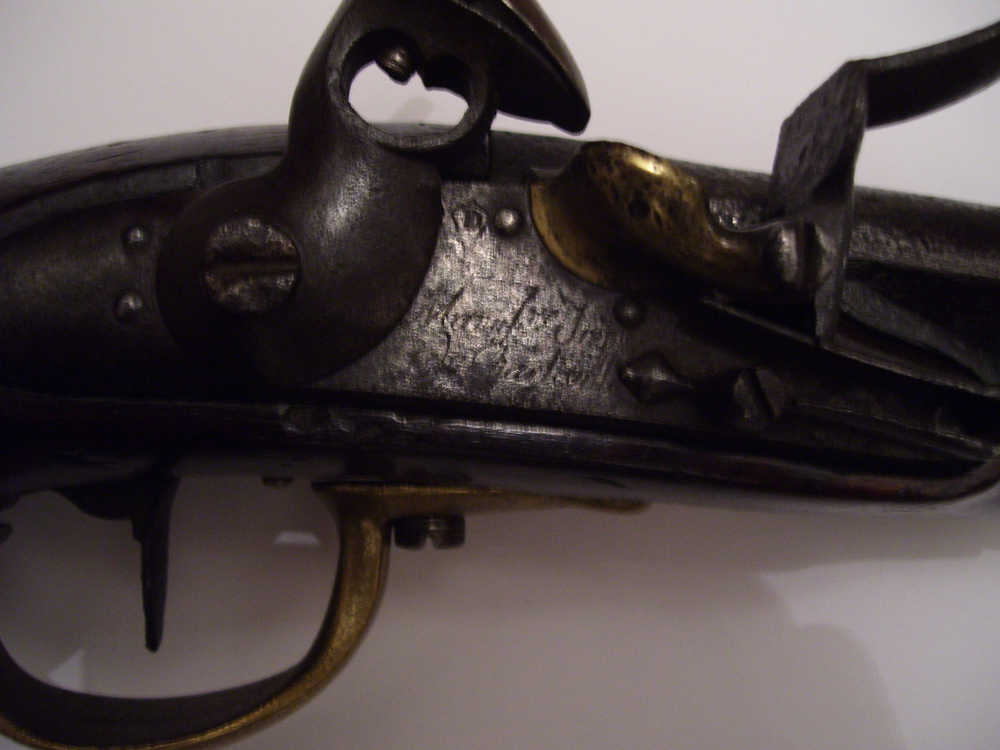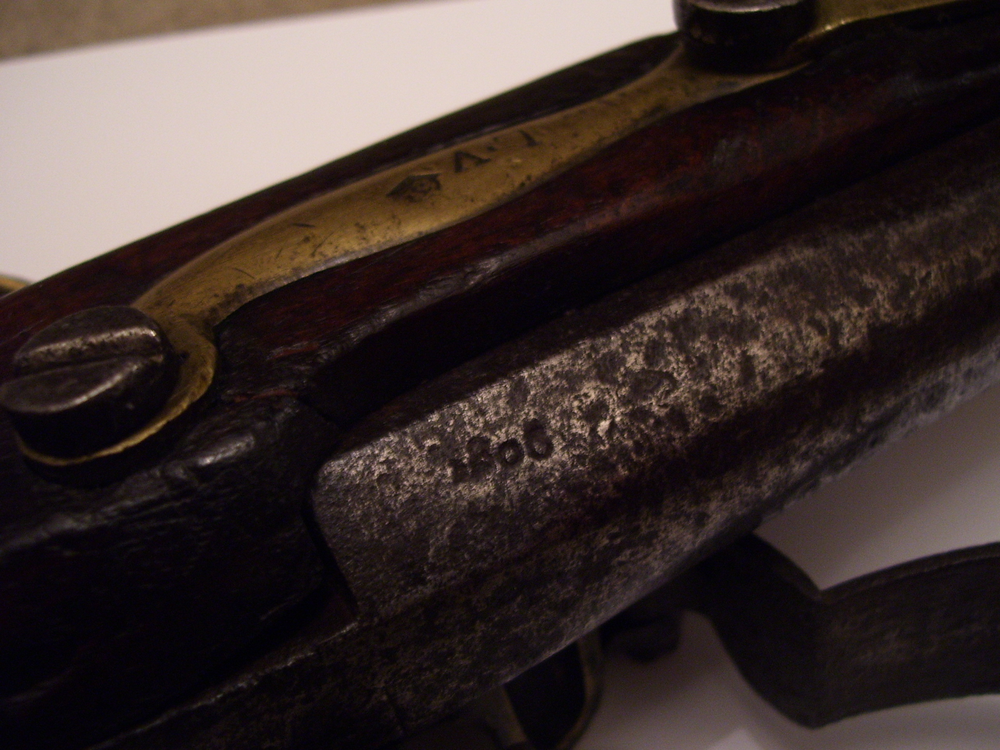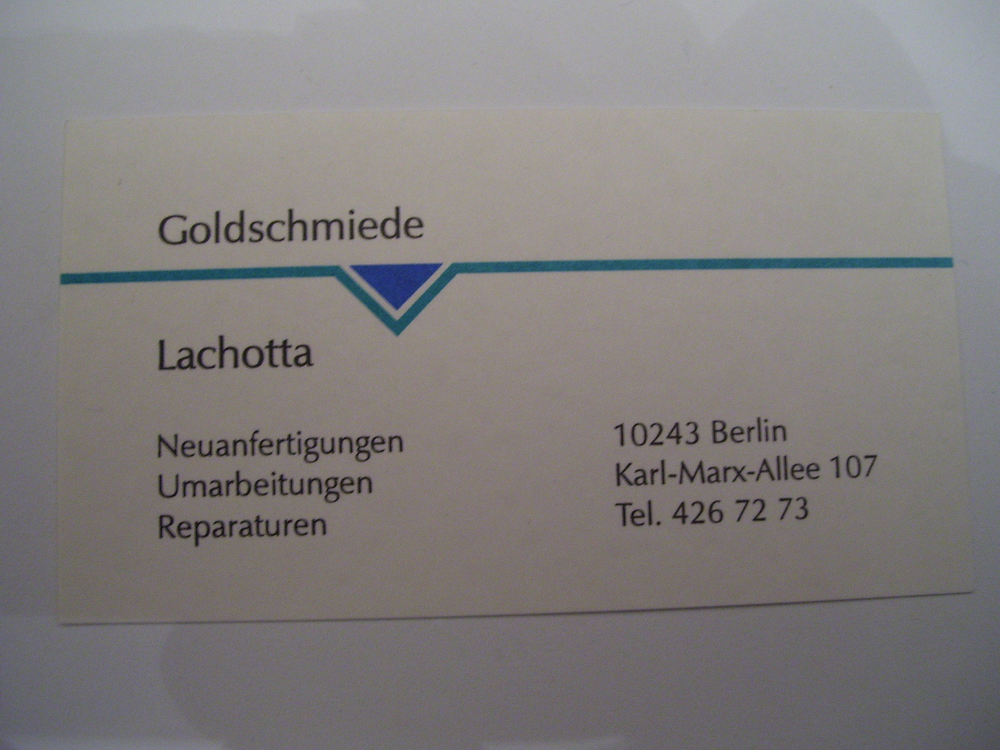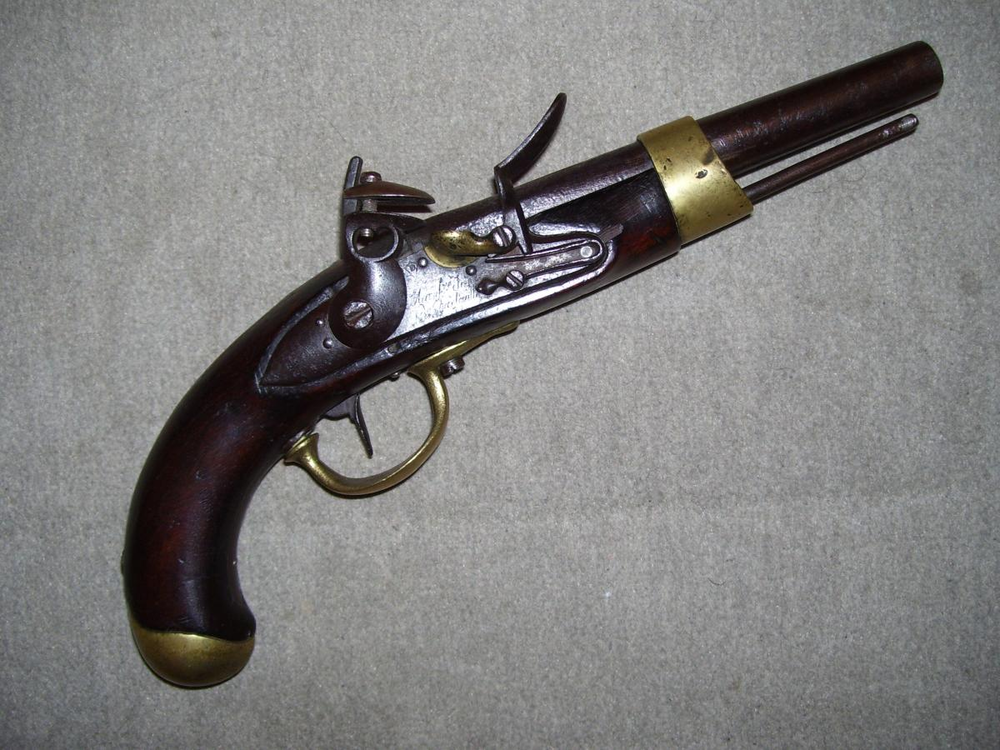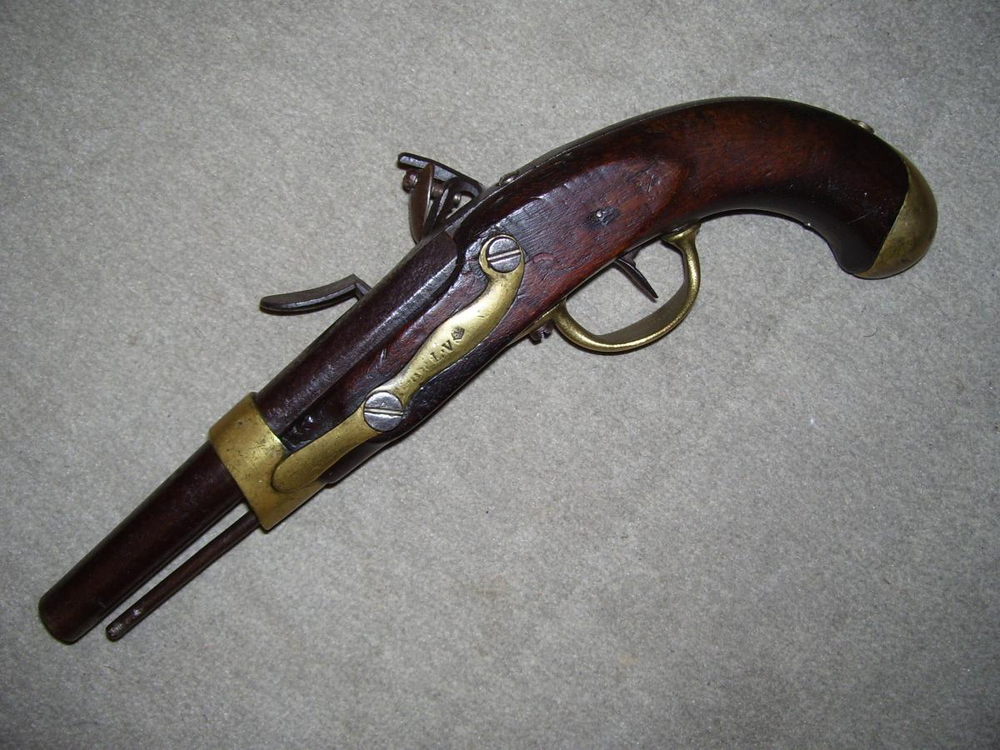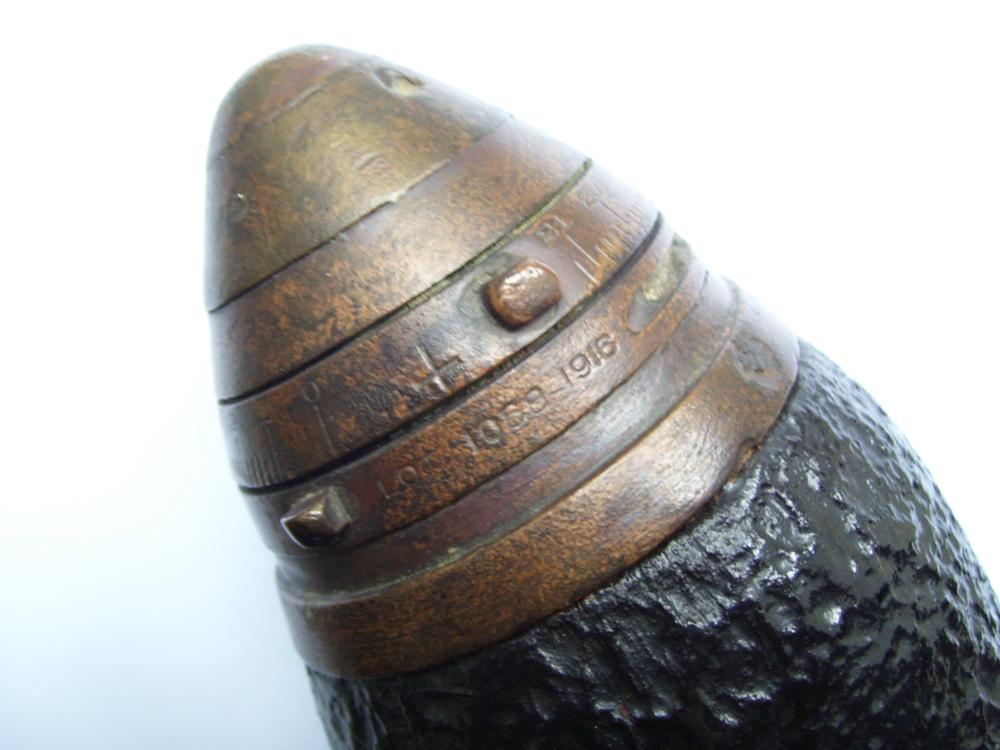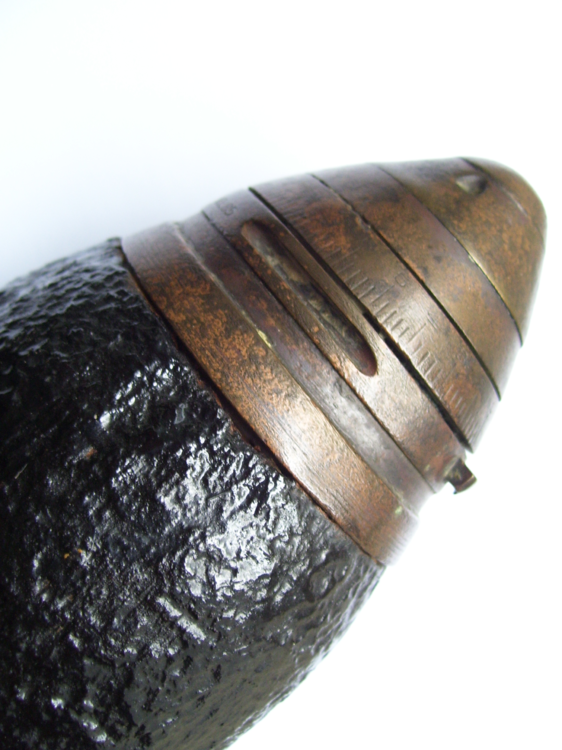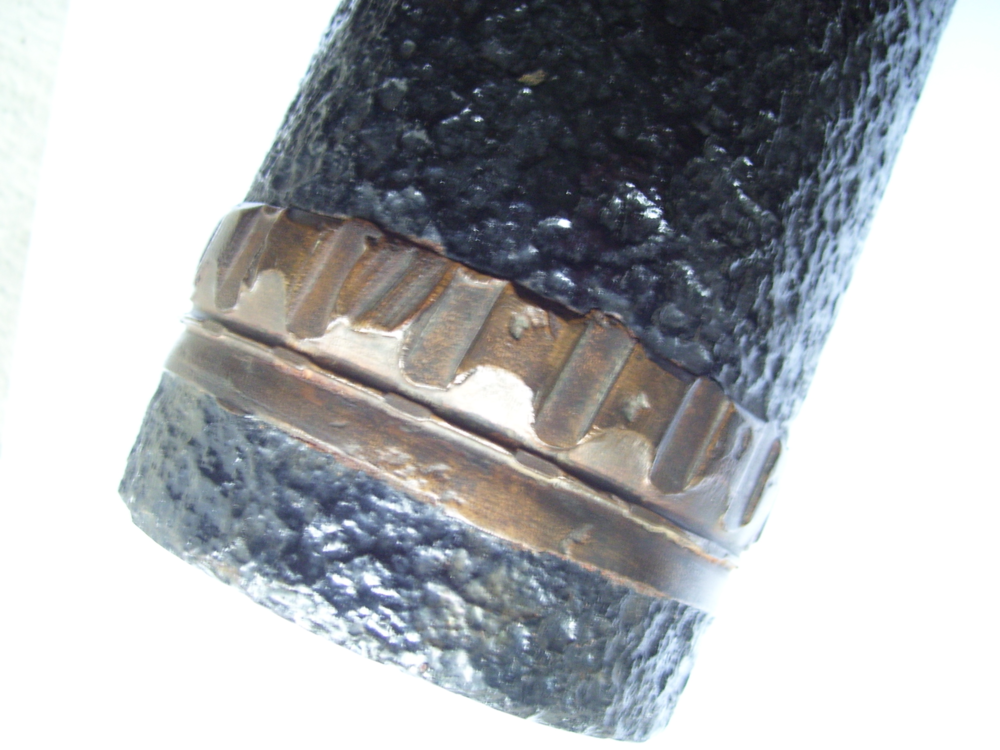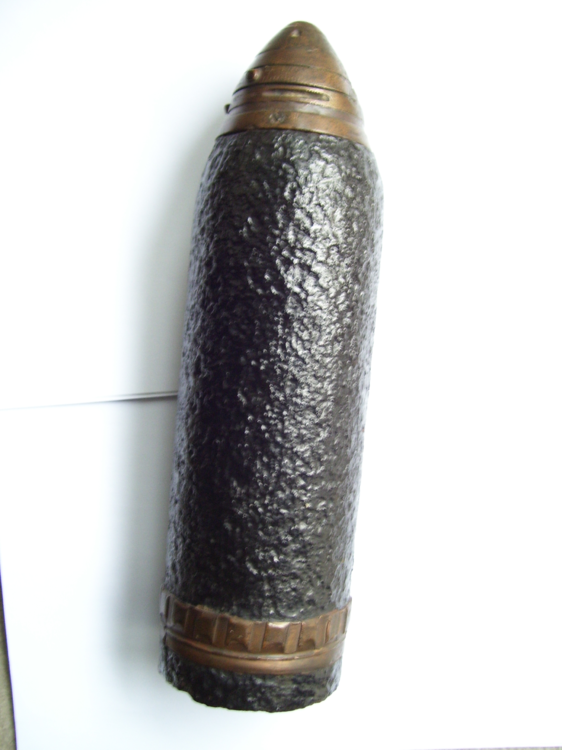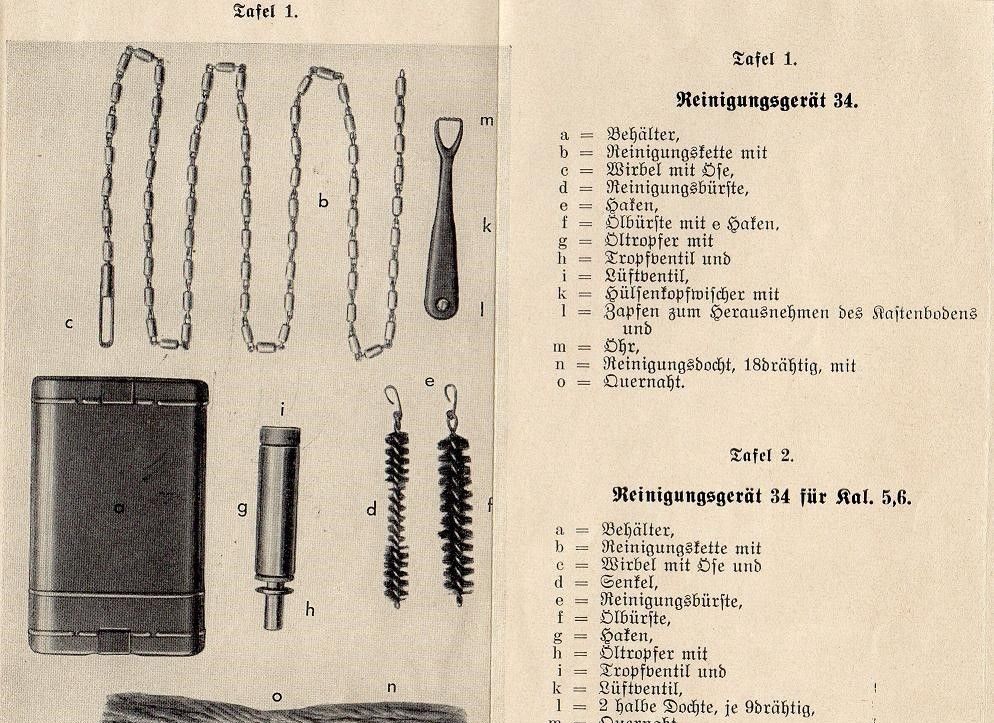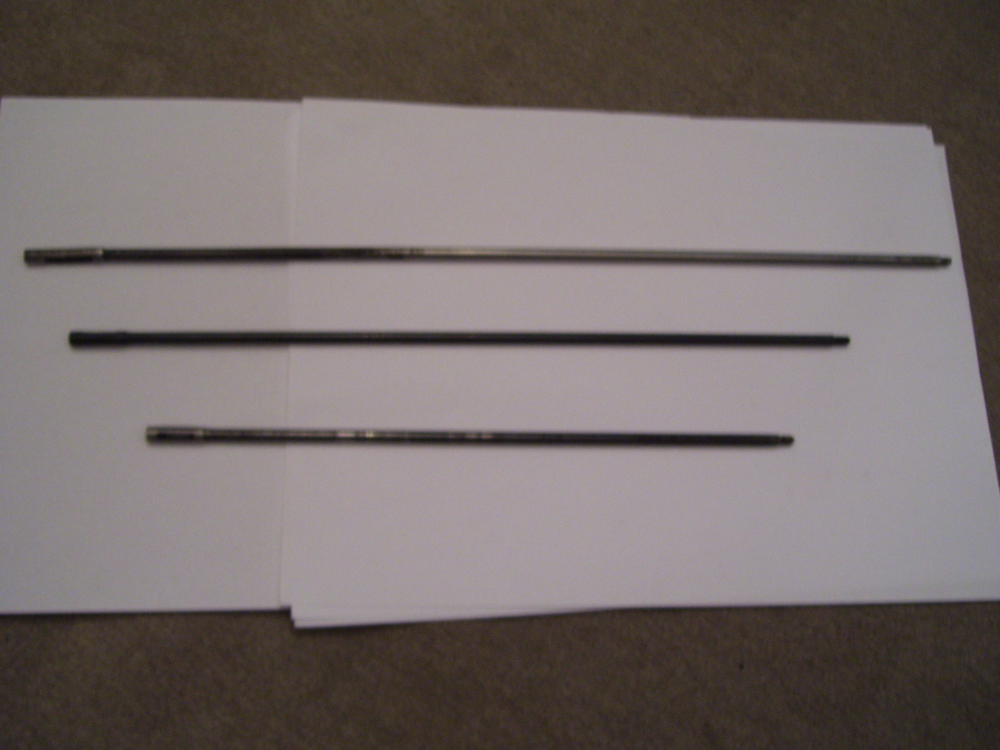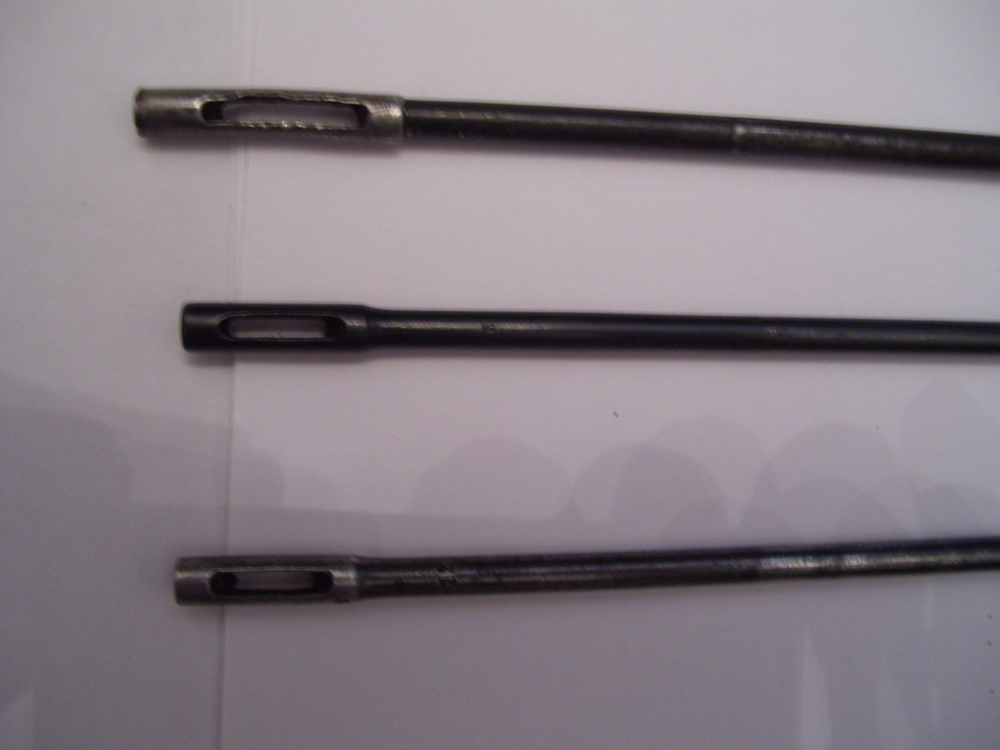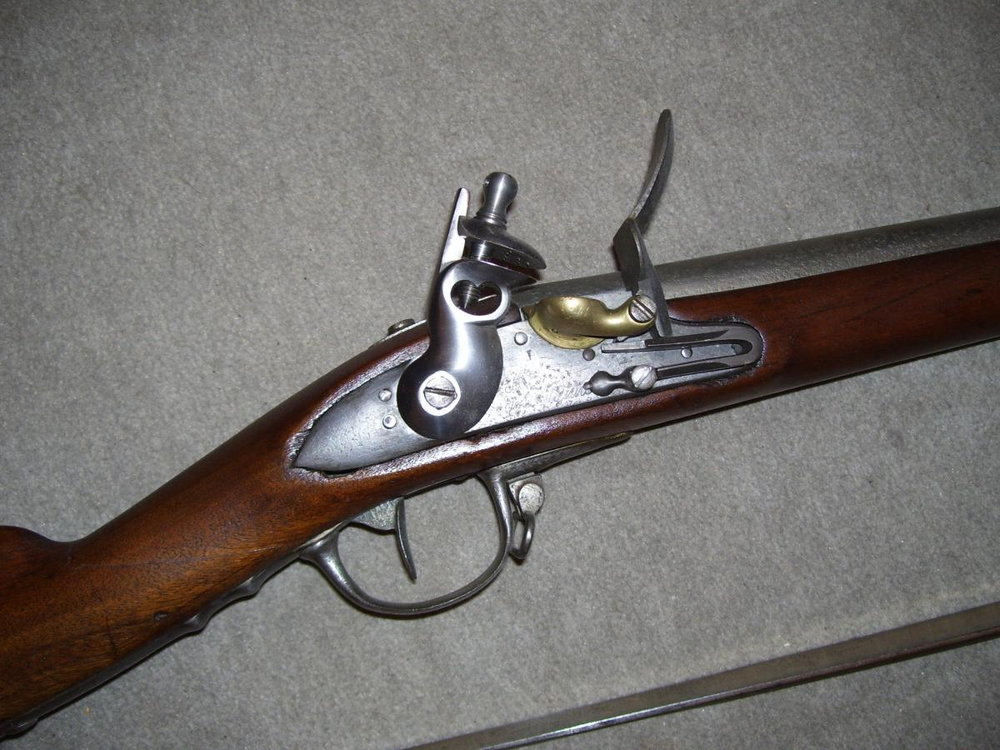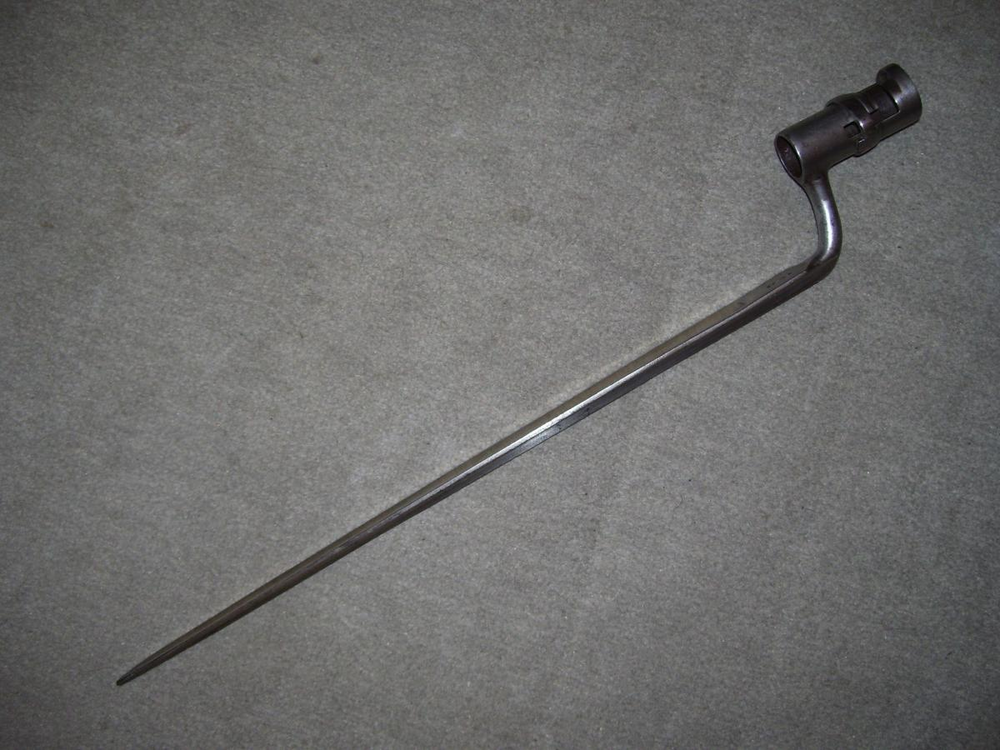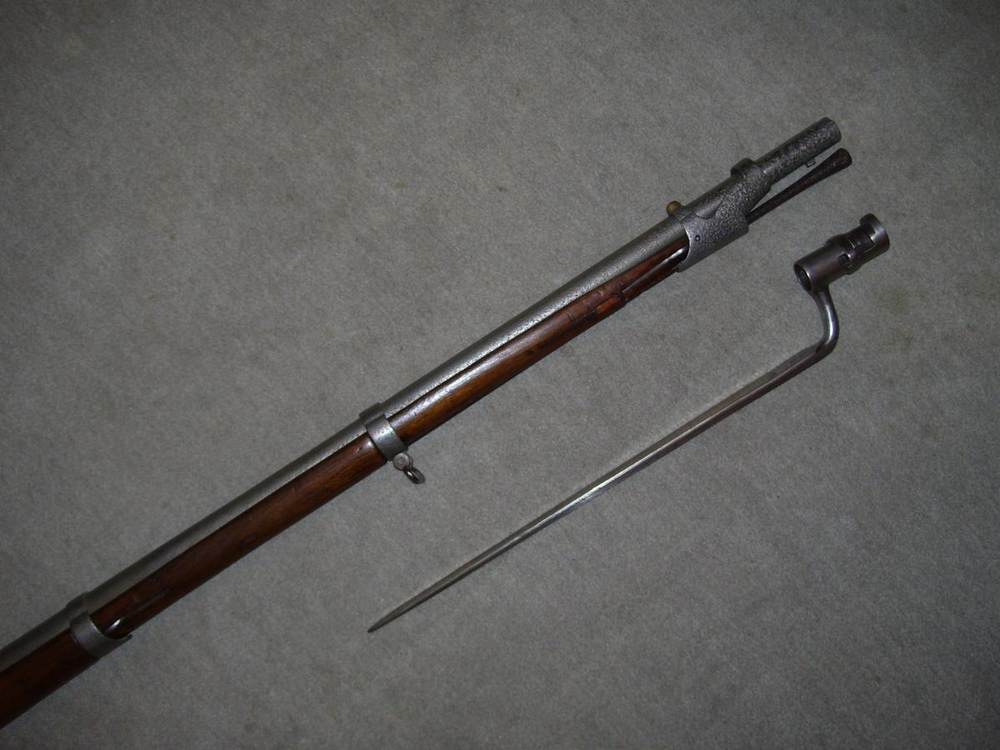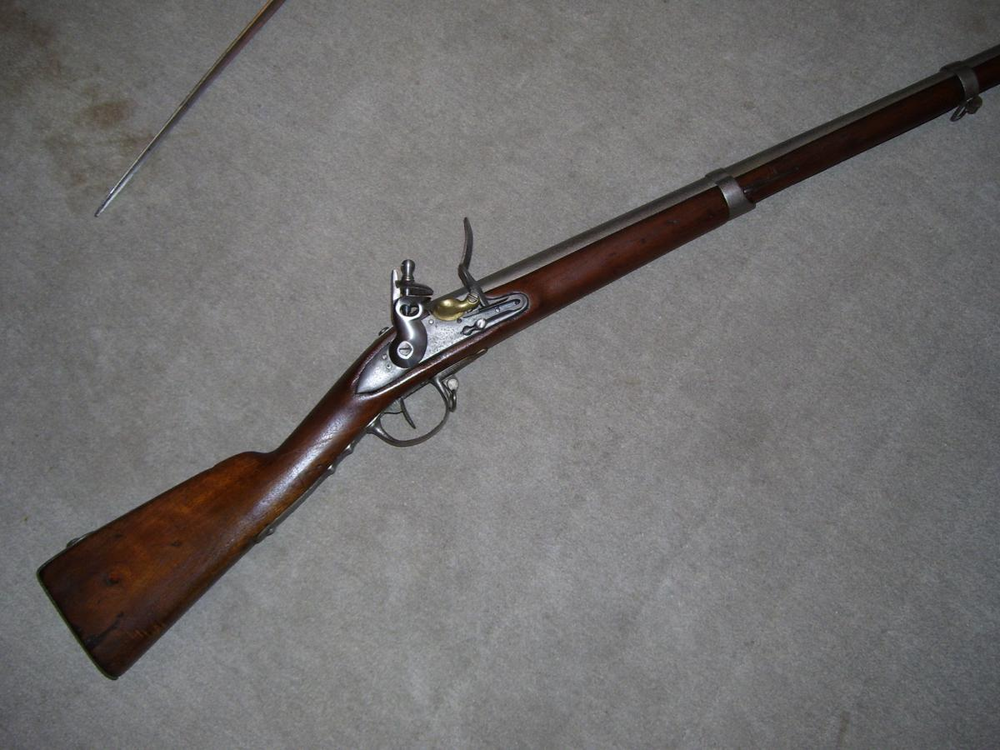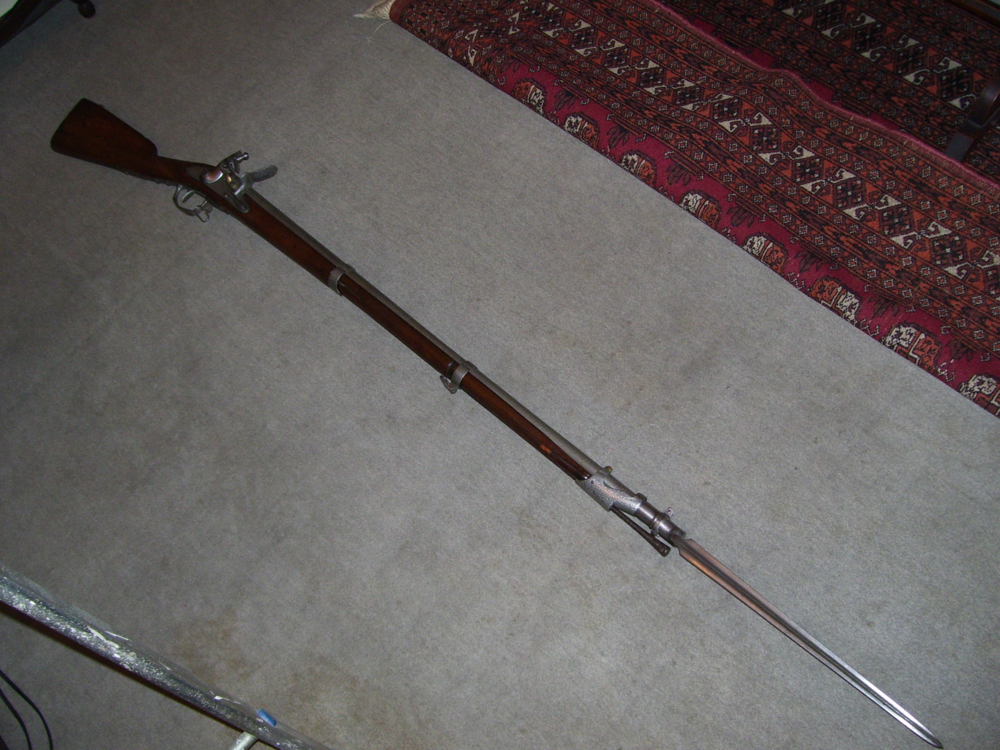Search the Community
Showing results for tags 'schußwaffen und zubehör'.
-

Neupreußisches Infanteriegewehr M.1809 u/M
Fritz posted a topic in De-activated and Antique Guns, Munitions and Fuzes
A fine example of a Prussian Infantry longarm with bayonet. The weapon measures 145 cm, the bayonet 57,2 cm.The socket bayonet has no ring, it is held by a spade-shaped spring underneath the barrel of the weapon. The weapon is smooth bored, rifled barrels were more of an exception in those days. The fittings are all of brass and each marked with a matching number. The lock plate is signed Potsdam G.S. the barrel has a date of 1834, and a further date of 1843 and mark "Neisse", when the weapon was converted from flintlock to percussion. This became the standard weapon of the Prussian infantry, apart from the French M.1777, which was available in large numbers. In fact, the M.1809 was almost an exact copy ot the French weapon. As a rule, a scabbard was never worn, the bayonet was constantly mounted on the barrel of the weapon and only removed for cleaning. The buttplate bears the stamped numbering to Landwehr-Regiment 6, 1.Compagnie, weapon no.51. Landwehr-Regiment 6 stood in Neisse. The u/M after the type designation stands for umgeändertes Modell, meaning converted from flintlock to percussion, this designation was also used to describe edged weapons. This example was in my collection for many years till about 2012. Archive photo 1998 Archive photos 2012 -

French Cavalry Pistol, Mlle. An 13 (1803)
Fritz posted a topic in De-activated and Antique Guns, Munitions and Fuzes
A Napoleonic period Flintlock Cavalry Pistol Mlle. An 13 - the year 13 after the French Revolution of 1789. Condition is average for the age, overall staining and some smoothed out pitting. The trigger guard is a rough cast brass replacement obtained from a company in Paris many years ago. This was so rough, I had to file and smooth some of the edges and surfaces. There was no screw hole bored, so I got this done with precision by a skilled jeweller, in the Karl-Marx-Allee (E.Berlin), around the corner from where I was living at the time. The part itself was originally made for the Mlle.An.No.9, but I was able fit this, after some carefull filing on this part. It is still not a perfect fit, but a good 90-95%, and not particularly noticeable. Apart from that, the hammer lip screw is an old replacement, but not correct. The ramrod is also not correct, probably from another weapon, and stuck fast. The whole Weapon has been repeatedly cleaned with gun oil (Balistol), with a special oil and wax for the wooden parts. The lock has been carefully removed and soaked in a bath of parafin oil, thoroughly dried and re-oiled, re-assembled. In all the weapon is now in a good state of conservation. The lock with moderate staining, is marked Manufr.Imple.de Chatelleraut, there is a date stamp to the left of the breech end of the barrel 1805 or 6 or 8 ??? All brass fittings are marked with a French Imperial Crown, others have a stamped L.V - possibly Légion 5 ??? It can be assumed that this pistol was captured locally, it could have been in the battle of Göhrde in 1813, which is just across the river Elbe, or even elsewhere. It probably had no further military use, although the Prussians adopted many types of French military weapons, such as swords, muskets and cuirasses, it is not recorded that captured pistols were taken into service. The dealer told me, he got it from a local farmer, probably had been in a barn or somewhere like that for ages. Purchased around 1994 from a Hamburg antiques dealer This jeweller in East Berlin was able to make the final adjustment to the cast brass trigger guard purchased from Le Comptoir de l'Arquebuserie, Paris. The hole for the screw had to be bored with great precision in the right place for fitting the trigger guard to the pistol. The lady looked rather surprised when she saw the items in question! -

British 18-Pounder Shell, 1916
Fritz posted a topic in De-activated and Antique Guns, Munitions and Fuzes
A British 18-Pounder shell head with fuse, purchased at the official stand at the offices of the South African War Memorial at Delville Wood in 1982. The copper bronze fuse has the lot number 1069 and date 1916. The driving band has the grooves of the barrel rifling. Overall deep pitting, overpainted as purchased. One of the many duds discovered and de-activated, hollow and empty, the fuse cap was loose and has been stuck in place. -

Various Weapon Parts & Accessories
Fritz posted a topic in De-activated and Antique Guns, Munitions and Fuzes
x A ramrod for a French M.1822 pistol, some staining and light pitting, stamped with a number "1" A flint for a flintlock musket for present day use, ideal to complete an antique military weapon. A clearing rod for Mauser rifles, this variation is 32 cm and stamped with a "4", possibly denoting the size length, possibly for an export model A spring tensioner (breakdown or re-assembly tool) for flintlock pistols or muskets, this was produced around 20 years ago as a usable accessory by the renowned firm of Peter Dyson, who worked for the Tower Armouries. I have used it myself and it is excellent. Precision worked steel with a slightly blued finish. -

K.98 Reinigungsgerät RG-34
Fritz posted a topic in De-activated and Antique Guns, Munitions and Fuzes
RG 34 - Reinigungsgerät - Offical manual depicting cleaning accessories for K.98, consisting of pull-through chain, extractor tool, oil bottle and two brushes. The tin has twin compartments, one for the tools, the other is for grease and cleaning cloths. The metal container is of thin steel with a grey zinc finish, the hinged lids were held by spring clips, which were usually brass. The case is usually WaA stamped and with a dated makers name. An original example by Mundlos & Co., Magdeburg, 1938 with WaA 243 stamp, complete with all original contents, except for the extractor tool. Clearing rods: Gew. 98, 39,5 cm Model 98, unknown type, 32 cm, probably export model K98, 25,8 cm -

Gew.98 accessory - Mündungsschoner
Fritz posted a topic in De-activated and Antique Guns, Munitions and Fuzes
Muzzle cover - Mündungsschoner for a WW1 Gew 98 rifle. Strangely enough this will not fit the WW1 Kar 98a, but only the G.98 (and also WW2 K.98) Unlike the mass-produced WW2 examples, this is a piece that is manufactured with ultimate precision, just like a fine weapon, so is not just a cheap throwaway accessory. Theoreticly every G.98 should have had one of these. The muzzle front has a hinged flap, to enable the rifle to be fired without removing the cover. A steel arch fits neatly over the front sight, without hindering the aim. To the rear is a concealed spring fitting, enabling the object to be set on the barrel/front sight, or again to be removed. There are two small arsenal markings on the back of the arch, a crowned B cypher and below this, a T, significance of which I do not know. Some slight rust staining in places. These are sometimes seen in WW1 photographs. The Mündungsschoner protected the muzzle not just against rain and dirt, but could also prevent physical damage to same. A rare accessory for the G.98 and hard to obtain. First one I have seen so-far, and in my possession for several years now. -
A French M.1777 musket from the Manufr.Imple de Charleville, which at a later date has been shorted to a length of 131 cm. This weapon was discovered in a sorry state in an antique shop in Berlin-Friedrichshain in the year 2000. It has at some stage been captured and re-issued to the Prussian army, as indicated by various marks and shortening. Orginal marking to lockplate has been erased, but still visible, presumably Manufr.Imple. de Charleville . or - St.Ètiènne (?) At the root of the barrel is marked S.G.1.C.18, which presumably is Schloss-Garde, 1.Compagnie, weapon no.18, and a date of 1811. Under the barrel is also a crowned P mark for Magazin Potsdam, where the weapon was altered. The M.1777 saw much service in the Prussian army after 1815, later in use with reserve regiments until after 1870. Has been since well restored. Some pronounced pitting to barrel and buttplate. The hammer is a modern replacement by Pedersoli, the battery spring was re-made by Peter Dyson of England, hand-forged. Difficult to get a full length picture of a long weapon
-
Two reproduction muzzle-loading pistols. Above an accurate copy of a Prussian Cavalry Pistol, percussion, M.1851 All parts in forged iron and brass, stock of cherrywood. Made by Paul Jacobi Company in Iserlohn. All original markings have been faithfully copied, on the lockplate, Potsdam G.S. under a crown. Left of the breech is the model designation 1851 stamped, to the right, 1860, the year of manufacture, above is a crowned FW stamp. The brass trigger guard is stamped: U.9.4.E.18 - stands for Ulanen-Regiment 9, 4.Eskadron, weapon no.18. All other small parts have a crowned arsenal mark.. The weapon is smooth-bored, as most of the weapons of it's day, the touch-hole has not been bored, as also the percussion nipple. Many of these weapons were made by the above-mentioned firm in the early 1980s, and have varying markings of different regiments. Some examples have been fired with black powder and have a proof mark (Beschußzeichen). I even saw a well-used example at a London arms fair in the mid 1980s with a stamp of Ulanen-Regt.13. Item purchased from Archiv-Verlag in Braunschweig as a special offer in the mid 1980s. Archiv Verlag dealt more with historical publications, but occasionally offered such interesting items, such as this pistol, orginal cartridge pouches for the Gew 88, copy decorations, etc.Not sure if this company still in business. The second example is a copy by Pedersoli of a French M.1777 flintlock pistol. This has absolutely no markings, apart from a proof mark and small eagle, and the brand name of San Marco hidden beneath the belthook. Normally the lockplate should have decorative engraving of the manufacturer, as all French weapons of the period, such as Charleville, St.Étiènne, etc. All fittings of forged iron or steel and brass, the stock is of nutwood (Nussbaum), finished with a modern type varnish, not corresponding to the period which it represents. Purchased many years ago from Zeughaus Überlingen, which is no longer in business. Superior quality copies of both weapon types.. An original example of the M.1851 Pistol, this example marked SUHL. The copy is very exact.












